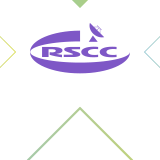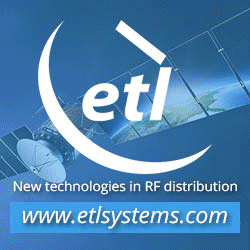Isotropic Systems and
SES GS Complete Milestone Trials to Unlock
Next-Gen Connectivity for U.S. Military
3 June
SES Government Solutions
and Isotropic Systems announce the successful
completion of the first of two milestone
next-generation antenna trials with the U.S.
Military aimed at unleashing unprecedented
information distribution to warfighters across
the battlefield.
The U.S. Air Force and U.S.
Army, through the innovative Defense
Experimentation Using Commercial Space Internet
(DEUCSI) program, are evaluating the ability of
Isotropic Systems’ optical beamforming antenna
to enable frontline armed forces to access
high-speed, real-time data simultaneously over
multiple commercial and military satellites.
First phase dual-beam tests
conducted at the Harwell Science, Technology and
Innovation Campus near Oxford, UK, have
successfully demonstrated transformational
optics at the core of Isotropic Systems’
multi-beam terminal that are fully capable of
linking with multiple satellites at the same
time.
Over-the-air (OTA) trials
conducted at an SES teleport in Port St. Lucie,
Florida, also part of phase one, have verified
the Isotropic Systems’ high-performance
multi-beam platform meets military requirements
to acquire and track SES’ O3b MEO satellites.
Phase two trials will test
Isotropic Systems’ latest antenna prototype over
links with SES satellites in geostationary orbit
(GEO) and medium earth orbit (MEO),
demonstrating seamless satellite-to-satellite
transitions and a redundant, resilient leap in
wartime communications.
The DEUCSI trials will wrap
up in 2021, ahead of the commercial launch of
Isotropic Systems’ optical multi-beam antenna
production scheduled for 2022, and in time to
support SES’ new high-throughput MEO
constellation satellites coming online, the
groundbreaking O3b mPOWER system.
“The armed forces and
defense agencies are incredibly good at
acquiring actionable information, but they run
into bottlenecks when they try to distribute
that mission-critical data over single beam
parabolic antennas and other outdated
infrastructure,” said Scott Sprague, Isotropic
Systems CCO. “These milestone trials with the
U.S. Army and Air Force are successfully
demonstrating the multi-beam, multi-orbit
connectivity and capabilities our
high-performance terminals will put in the hands
of frontline warfighters and decision makers
across the government sector and battlespace.”
“Next-gen satellites and
constellations need equally robust and resilient
terminals and ground infrastructure to meet the
government’s ’Fighting SATCOM’ vision,” said
Pete Hoene, President and CEO of SES Government
Solutions, Brigadier General, USAF (Ret.).
“Interoperability and multi-orbit capabilities
are essential to achieving this vision, and
these collaborative trials with the armed forces
demonstrate how Isotropic Systems’ multi-beam
antenna can successfully deliver robust
connectivity across our vast MEO and GEO fleet.
Each successful phase is a prime example of how
the government and commercial partners can
develop capabilities in parallel, which is
especially important to us as we ready to launch
our O3b mPOWER constellation and SES-17
satellite this year.
“Without affecting the main
communications link, the Isotropic Systems
multi-beam terminal can use a second or third
link to evaluate the environment to preemptively
decide the best routing option at any given time
to maximize performance,” explained Brian
Billman, Vice President of Product Management
for Isotropic Systems. “That’s the level of
differentiating capabilities our terminal
roadmap leads to as a result of these important
trials with the U.S. military.”











